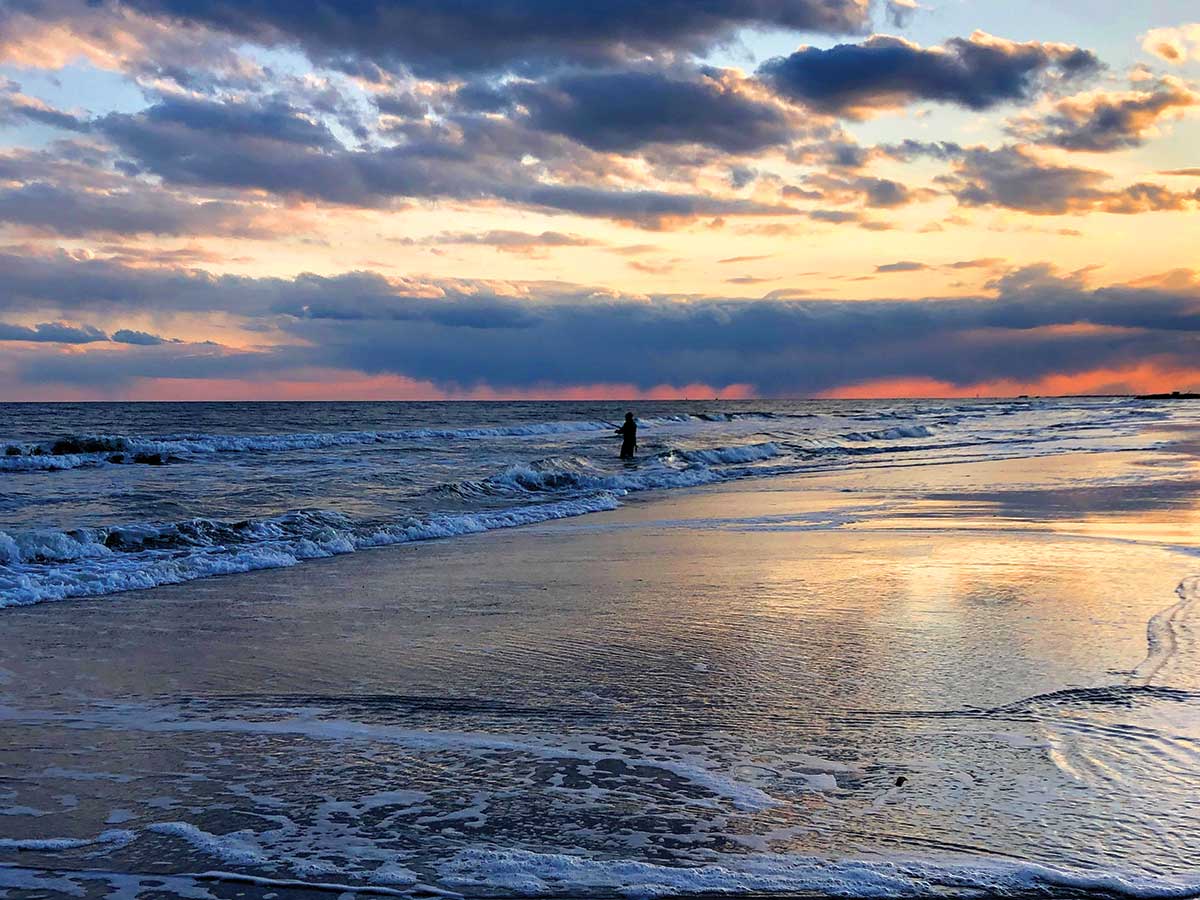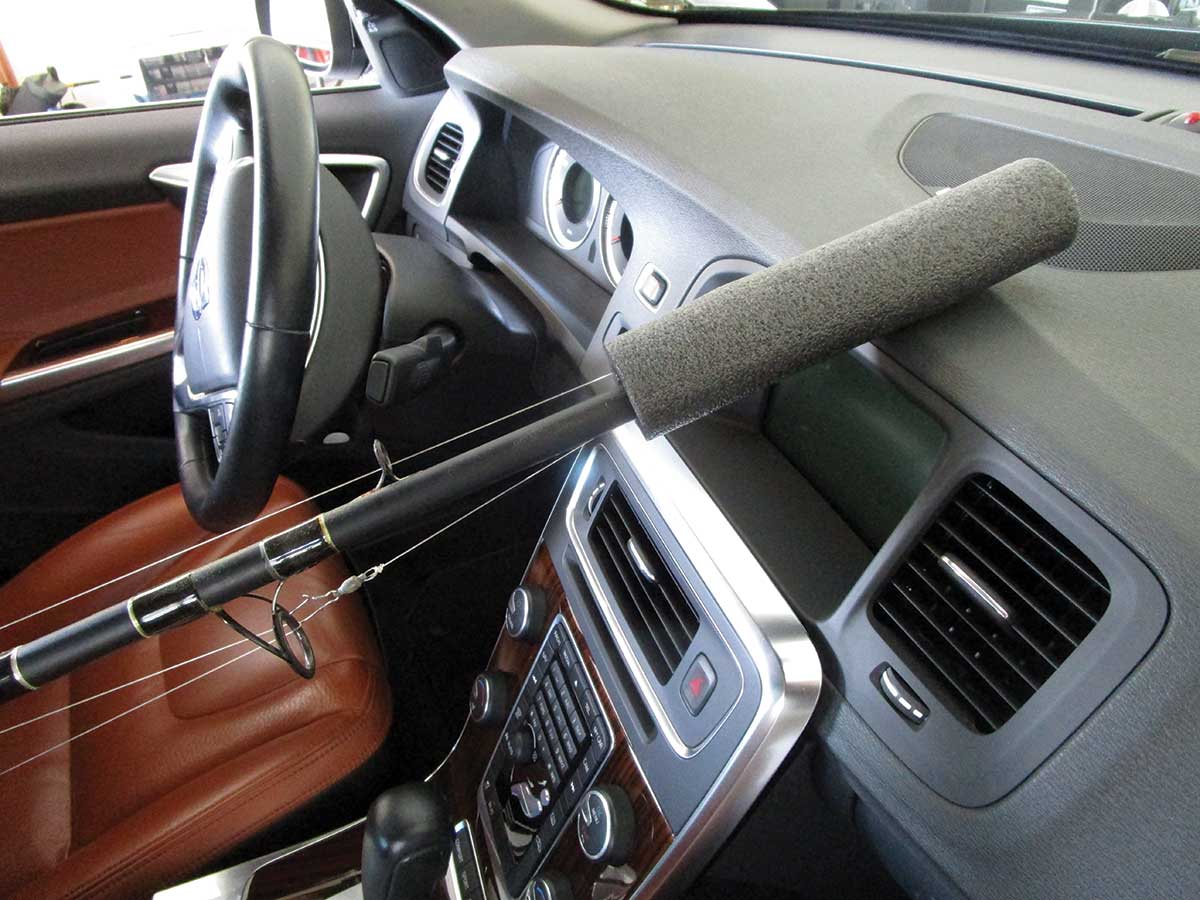
Here’s some advice on how to overcome the limitations on surfcasters who don’t rely on four-wheel-drive for access.
Pickup, Jeep, or SUV – so long as it’s a four-wheel-drive, it’s a great way to drive the sands looking for fish within casting distance. Don’t feel like running around? Back the vehicle in, drop the tailgate or pop the hatch, and you have an instant leaning post while drowning some bait.
But what happens if your car is a sedan or an all-wheel-drive and it’s not geared up for the beach? Does that mean you can’t still enjoy the thrill of fighting a fish from the beach and bringing it through the surf? All it means is your approach is going to have to be different. Fortunately, Long Island is ripe with fishing access for those who rely on a car for their beach fishing efforts. From Staten Island to Breezy Point, through the Rockaways to Point Lookout, Jones Beach to Smith Point and Shinnecock to Montauk, there are ocean beaches with parking and fishing access. Some beaches like Atlantic Beach, Lido, Pt. Lookout and Tobay may limit access to residents or charge a high daily fee from May through September, but State Parks (Jones Beach, Captree, Robert Moses and Montauk) offer plenty of access to the general public. Many of the North Shores beaches fall under local jurisdiction which is fine if you are a resident, but here too, State Parks like Caumsett, Sunken Meadow, Wildwood and Orient are open to the general public. State Park fishing access can be expanded by acquiring an annual Sportfishing (Night Fishing) Permit. Available for $35 at State Park offices prior to March 31 and beginning the Monday after Labor Day, it gives you night fishing to the parks, and also access to specially designated fishing areas such as Green Island and parking lots that are closed to the general public.
Walk and Cast
A great option for those with healthy knees, hips, and the vitality they were born with is to walk the beach for a few hours for a mile or two, watch the tides, and there’s a decent chance for success. If you’re practicing catch and release, no problem. But let’s say you’d like a little something for the table. No record breakers or tackle busters but still, a striper in the upper slot size limit of 15 or 16 pounds and two bluefish around 7 or 8 pounds can be burdensome. Add to these fish your surf rod, reel, lure bag, knife and pliers and you’re somewhere well into the neighborhood of a very awkward 40 pounds, which doesn’t include waders, Boga grip and anything else you’re inclined to carry.
Granted, there is nothing wrong with this method if the fish you catch cooperate and hit on your last few casts back near the car. However, the same rule that dictates the phrase, “You should’ve been here yesterday,” also states that things most likely occur when you’re at the furthest point in your trek.
There are obvious advantages to walking and casting. The most obvious is the ability to thoroughly fish long stretches of beach and spots that might be overlooked by those fishing out of a 4×4. You are more likely to spot the swirl of a fish feeding just beyond the wash, or the movement of baitfish. You are also likely to spend more time with a lure or bait in the water than if you were sitting comfortably in your beach buggy sipping a cup of coffee.
While it is human nature to over-pack your lure bag, your back and shoulder will appreciate it a whole lot more if you travel light. For fishing from dawn to dusk, a single column lure bag will carry enough lures to cover most situations. If you prefer a double row bag, resist the temptation to stuff it full of lures, most of which you won’t use. A couple of poppers (You can’t go wrong with 2-3/8-ounce Super Strike Little Necks.) a 2- to 2-1/2-ounce pencil popper, a couple of swimming plugs like the SP Minnow, a wide bodied metal like the Hopkins Shorty or Kastmaster, a couple of West End metals like the J-8 and D-5, several bucktails in the 1- to 2-ounce range, a few soft plastics like swim shads and a container of Fat Cow strips for your bucktails should do it.
For those nighttime junkets, a couple of Yo-Zuri Hydro Minnows or SP Minnows, yellow and blurple Super Strike darters, a bottle darter or bottleplug (casting swimmer), a couple of needlefish and some soft plastics will cover most nighttime situations. Don’t forget a good neck light, and it is always a good idea to have a backup light in your surf bag.
Staying Put
This is where a little advanced planning and prep can help put the odds in your favor. Granted, you are no longer going in search of fish, but rather taking advantage of two key elements. During the fall and spring migration the fish are on the move and by keeping your bait fresh you are putting out a scent trail in the water that will (hopefully) draw fish in. If you’re in a new area, look for a point on the beach that juts out further or a break in the outer bar. If there is a tackle shop near the area you are fishing, pick up your bait there and ask for any hints they might have on the most productive stretch of beach. Such advice can often mean the difference between success and failure.
The trick is to make your journey out onto the sand as easy as possible. A bucket is the way to go if you are setting up to fish bait. A 5-gallon bucket will suffice. If you don’t have one, they are available in any Loews, Home Depot or most hardware stores. The key is that it has a handle for easy carrying and is large enough to stow what you need, while still being small enough to make you think twice before overburdening yourself with stuff you don’t really need. Into the bottom of the bucket toss a bait knife (in a sheath), a rag or two, along with an optional Boga grip and cutting board. A gallon storage bag can be used to store your lunch and a bottle of water. A collapsible soft cooler bag is ideal for storing your bait and keeping it fresh.
You will also need a small tackle or utility box to store a few 6/0 or 7/0 circle hooks for bunker chunks and 7/0 baitholder circle hooks for clam or worms. Place each hook and pre-tied leader into a sandwich bag with the air squeezed out of it. This eliminates that tangle of leaders, hooks, and lures that otherwise develops. Include some pyramid and Hatteras sinkers (two of each weight you think you’ll need). In case fish start breaking in front of you, pack a couple of bucktails in 1- and 1-1/2-ounce sizes, a 2-ounce Hopkins single hook with white bucktail; a 2-3/8-ounce Little Neck popper (yellow over white) and a Gibbs pencil popper (red into white). These five should be sufficient to handle any casting situation should action suddenly erupt in front of you and you want to forego the bait. Other items to consider are a small tape measure, an assortment of swivels and clips, some 3-way swivels, and a fish-finder rig.
Access Dos and Don’ts
There is no single answer for this, but that doesn’t mean it’s a complex problem. Rather, all it requires are a few simple phone calls. Thanks to the joy of bureaucracy local regulations will vary from township to township and even within individual towns within the township. Likewise, regulations are not all the same for county or state parks. Additionally, night fishing usually requires a different specific permit.
Searching the internet can sometimes provide the answer you seek but beware. The info may be incorrect if it is a general message board, or it could be out of date. This is where a much older and more time-tested method, one often favored by members of the older generation, works. It’s called the phone. The one thing that will be correct is the phone number for the state or county park whose responsibility it is to manage the beach.
Because you are travelling by car or family SUV there is a good chance there’s no roof rack on top and your 10- or 11-footer is in two pieces. Before putting your rod in the car, place the two pieces side by side (thick part of the shaft against the butt of the rod) and use rubber bands to secure the two sections to each other. Slide a 12-inch length of foam pipe insulation over the tip section and you have a gentle cushion and protection for the rod’s tip.

Likewise a visit to the town hall for a local beach will also provide valuable information. One local town may allow parking after September 30, while the one next to it may relax its regulations right after Labor Day. Still a third might not allow for any variation for non-residents. Call or better yet stop in and visit. You’d be surprised at how helpful the folks who work there can be.
Time and days of the week may also be a factor. Often a booth will open at 9 a.m. – no problem for the early morning fisherman. But what about the afternoon when the booth closes at 4 p.m. and sunset is the curfew? At the beginning of the fall run the afternoon still allows for a comfortable 2-1/2 hours, but towards the end it’s less than 30 minutes.
If you are planning to fish a bay or sound, spend a rainy afternoon with your computer and Google maps prior to heading out. Before global satellites gave us bird’s eye views, Hagstrom’s Maps were the go-to resource for finding roads that dead-ended at the water. With today’s technology we can now go to street view and see if there are any parking restrictions before actually making the trip.
Yes, beaches are there for us to use. And while access may not be as liberal as in “the good old days,” there is one way to help make sure it doesn’t become even more limited. Take a plastic grocery bag with you and use it for all of your trash: sandwich wrapper, coffee cup, fishing line, and anything else. Then, go one step better. Continue to fill the bag with any debris you find: deflated mylar balloons, plastic water bottles, empty bags, a discarded child’s sand toy, a solitary sandal. By leaving the beach better than we found it, will go a long way toward helping to keep our favorite beaches accessible.

